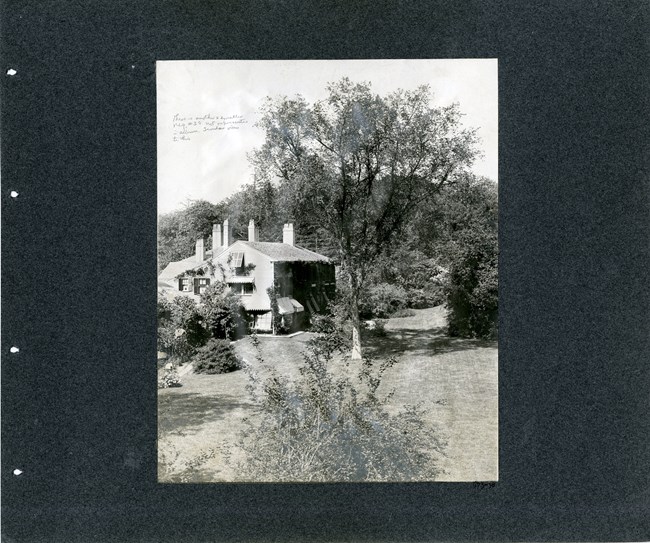Part of a series of articles titled Echoes of the Olmsted Elm: Works from the Rhode Island School of Design Witness Tree Project.
Article
Echoes of the Olmsted Elm Alan Banks Essay

Olmsted Archives
The elm was in decent shape in 1991 when I first saw it leaf out. It certainly created a great canopy for anyone out on the South Lawn and I realized quickly that it helped to moderate the temperature of the southwest side of the house. I don’t know if Olmsted would have built the Plant Room, with all its windows, if the cooling effect of the elm was not available. When I moved into the office on the floor above the Plant Room, its effects were even more pronounced and when it was removed in 2011, it became apparent that my office, which now is a conference room, would benefit greatly from the new geothermal cooling system that has since been installed.

Alan Banks
Supervisory Park Ranger
Frederick Law Olmsted National Historic Site
Last updated: April 8, 2022
